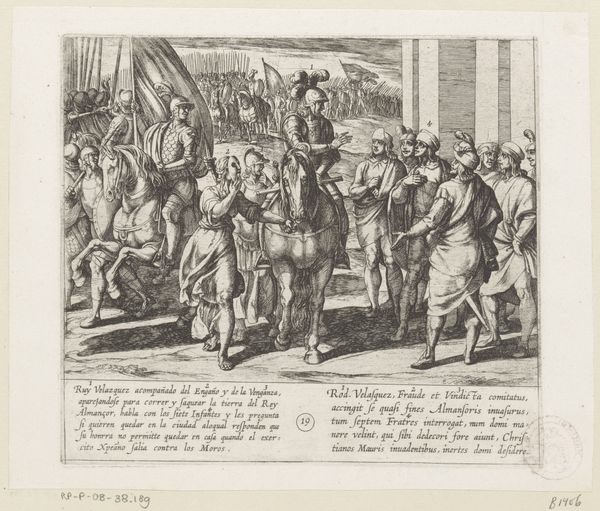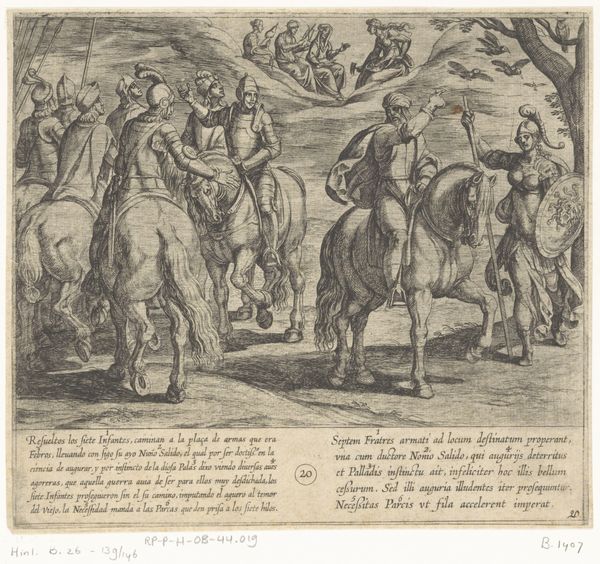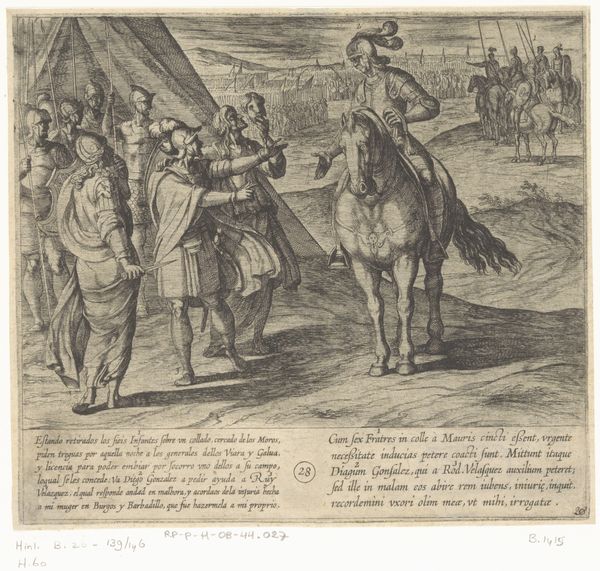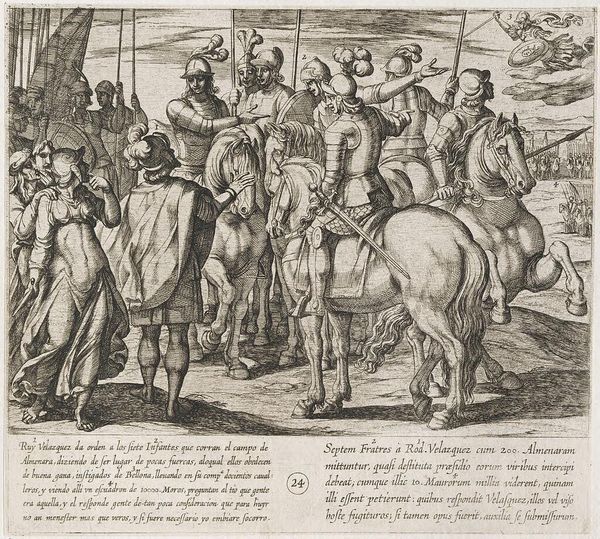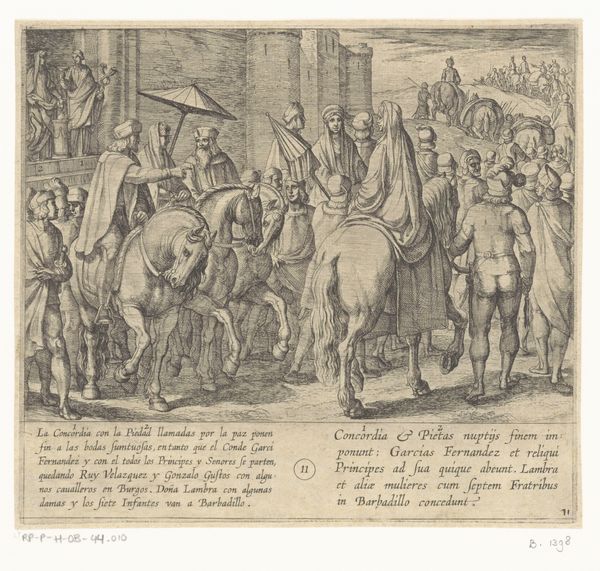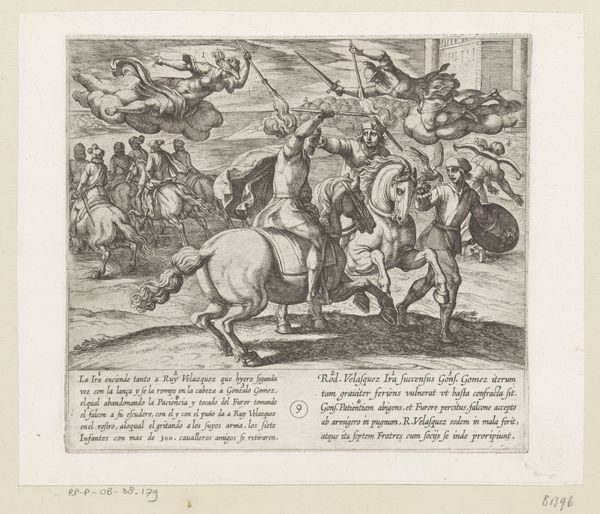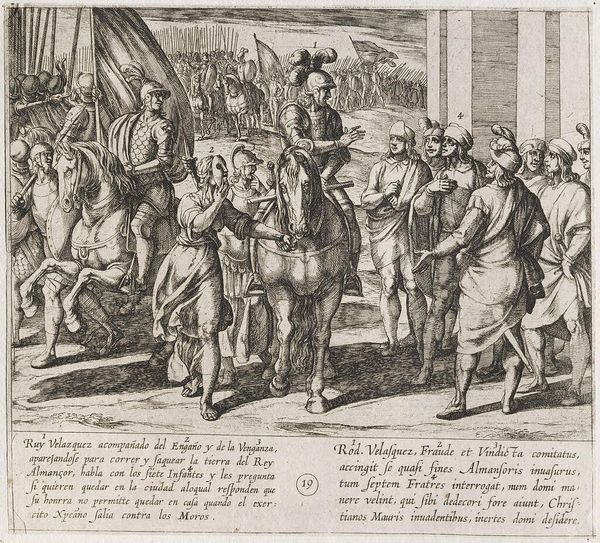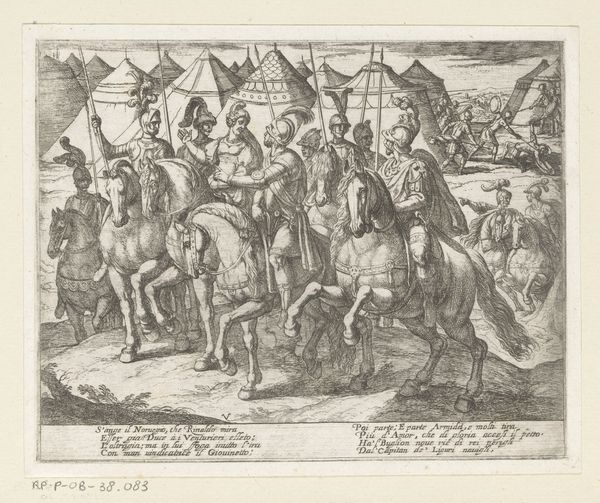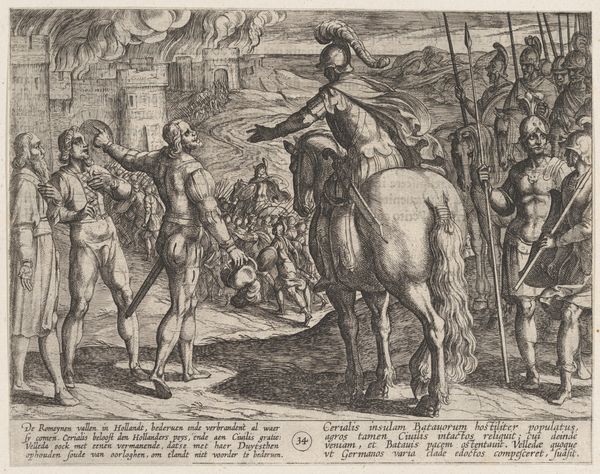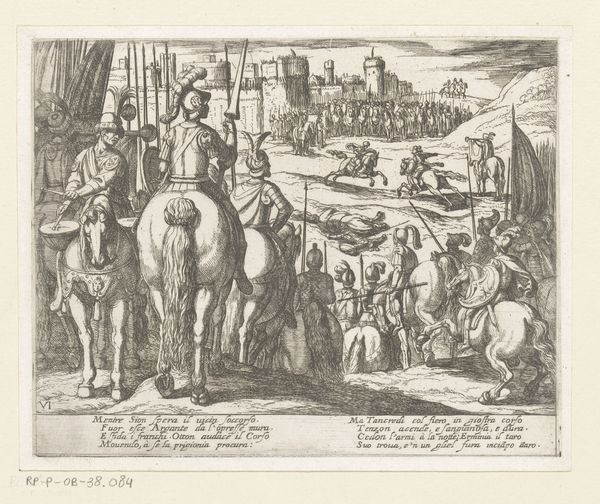
print, engraving
#
narrative-art
#
baroque
# print
#
landscape
#
figuration
#
line
#
history-painting
#
engraving
Dimensions: height 185 mm, width 206 mm
Copyright: Rijks Museum: Open Domain
Curator: Ah, this print. "Ruy Velazquez geeft de zonen van Lara hun opdracht," by Antonio Tempesta, created around 1612. It’s currently held in the Rijksmuseum. An engraving full of historical weight, wouldn't you agree? Editor: My first impression is just…intricate! All those tiny lines forming such a dramatic scene. It feels almost chaotic, with so many figures crammed into the frame, yet it all seems intentional. There’s a definite baroque flair with all the movement. Curator: Baroque is right. Tempesta was a master of depicting narratives with dynamism. This piece tells a story – Ruy Velazquez entrusting the sons of Lara with a mission, although if you didn't know the tale already, deciphering it could be tricky. Editor: Absolutely. And that’s where the art historian comes in! I'm wondering how this narrative circulated. Prints were like the mass media of their day, weren’t they? What would a piece like this mean for understandings of Spanish history? How was the history depicted influencing, and being influenced by, social mores? Curator: Precisely. Prints disseminated stories and shaped perceptions. What strikes me, though, is Tempesta's skill in rendering emotions with such economy of line. Look at the stoicism on the faces of the warriors! Almost masks of resolution. Editor: But also consider how the socio-political structures allowed Tempesta to express, or perhaps dictate that he must express, certain aspects of those emotions. What purpose was his art actually serving? That heroic stance, is it celebrating valour or glossing over something darker? Curator: That's the beauty of art, isn’t it? It invites us to delve beyond the surface and unearth these nuances. The detail in the clothing, the postures of the figures – they’re so evocative. It feels very personal and emotional, yet deeply influenced by those around you. It is the eternal paradox of humanity reflected back in art. Editor: A fitting end to a fleeting glance at history. Indeed, these old prints open vast, often troubled, archives of history for us to reflect upon.
Comments
No comments
Be the first to comment and join the conversation on the ultimate creative platform.
